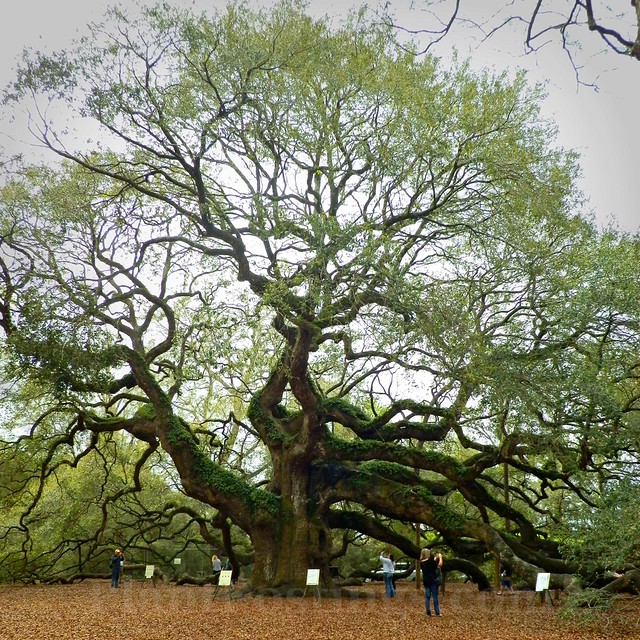
If you're ever traveling near Charleston, S.C., you really must make an effort to see the "Angel Oak." This 400-500-year-old Southern Live Oak tree (Quercus virginiana) covers about 17,200 square feet and is 65 feet tall. It's thought to be one of the oldest living things in the U.S.

There's no charge to visit Angel Oak Park, located on Johns Island, just a few miles southwest of Charleston. It's quite an expansive property, with plenty of space to view, walk near, and explore below and among the branches of this amazing tree.
The day we were there, in March, the weather was misty, but comfortable. We were on our way between Charleston and Savanna, Ga. As always, I wish I'd had more time to explore, and of course pictures can't do it justice. But believe me, it was wonderful!
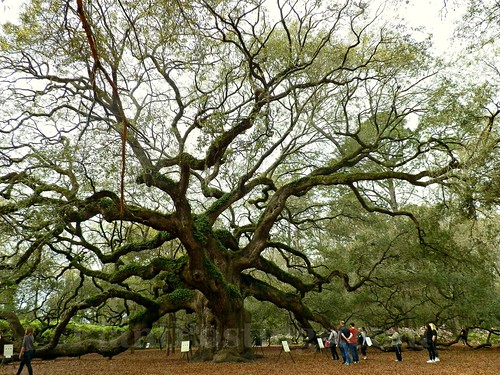
While looking through my photos to decide which ones to post, I noticed the people in this photo were leaning in! This was very flat ground; not a hill. I find their posture with the tree fascinating.
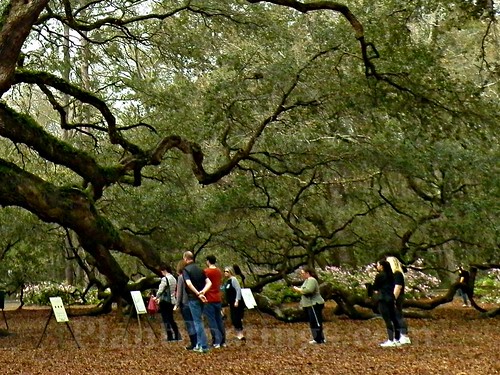
Zooming in: Was it empathy and respect for this incredibly long-lived and stunningly beautiful tree that caused them to lean toward it?
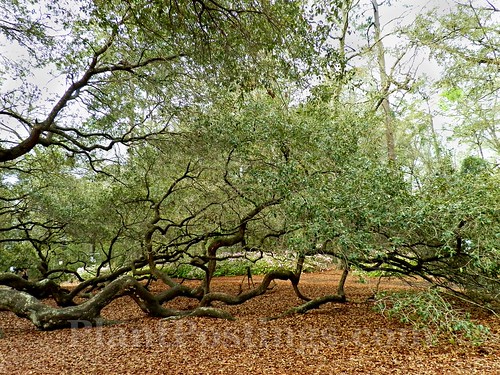
Some of the tree's branches are so large they're like separate trees, themselves. Many are so big and heavy that they rest on the ground, which only happens with the very oldest Live Oaks.

The main trunk has a circumference of 28 feet.
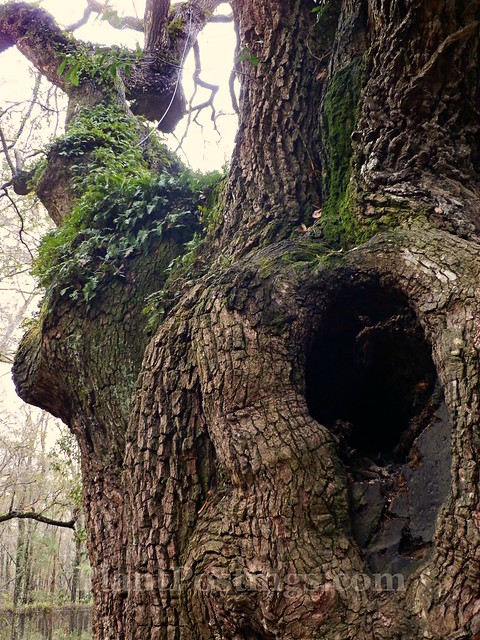
There are so many awesome features of this tree, but what really hit me and amazed me on observing it was that it's obviously a complex ecosystem unto itself--a community of living and nonliving things that work together. The knots, the bark, the branches, and the tree holes support insects, birds, mammals, fungi, mosses, lichens, bromeliads, and other life forms. I could have spent hours studying all the nooks and crannies and secret treasures.


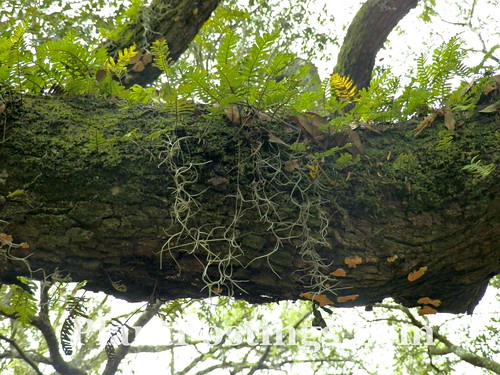
Love the Spanish Moss (Tillandsia usneoides)!

Good memories; amazing tree! Have you seen it?







